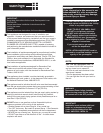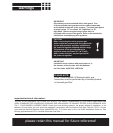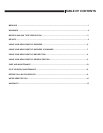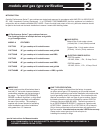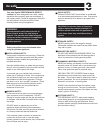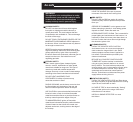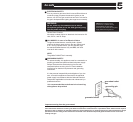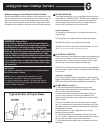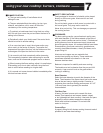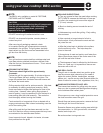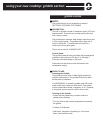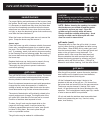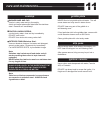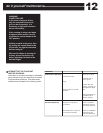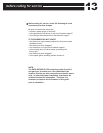
7
using your new cooktop: burners, cookware
SIMMER POSITION:
a) The type and quantity of food affects which
settings to use.
b) The pan selected affects the setting, its size, type,
material, and whether a lid is used, all affect the
consistency of the cooking temperature.
c) To maintain a low/simmer heat, bring food to a rolling
boil. Stir well, then cover the pan and lower the heat to a
setting to the Simmer
d) Periodically check your food to see if the control knob
should be turned to another setting.
e) If an over-sized pan is used, the simmer action may
occur mainly in the center of the pan. To equalize the
temperature throughout the food, stir the food around the
outer edges of the pan into the food in the center.
f) It is normal to stir food occasionally while simmering.
This is especially important when simmering for several
hours, such as for homemade spaghetti sauce or beans.
g) When lowering the flame setting, adjust it in small steps.
If the setting is too low to hold a simmer, bring the food
back to a boil before resetting to a higher heat.
h) It is normal not to see simmer bubbles immediately after
the food has been stirred.
SAFETY PRECAUTIONS:
Food packaged in aluminum foil should not be placed
directly on the burner grate. Aluminum foil can melt
during cooking.
Do not let plastic, paper or cloth come in contact with a
hot burner grate. They may melt or catch fire.
Never let a pan boil dry. This can damage your pan and
the cooking surface.
COOKWARE:
For best cooking results, use professional quality pans
with metal handles. (If the flames extend up the side of
the pan, plastic handles can melt or blister.) Professional
quality pans are found at restaurant supply stores and
gourmet specialty stores. All cookware should have these
characteristics: good heat conductivity, good balance,
correctly sized base diameter, a heavy, flat base, and a
proper fitting lid.
Aluminum and copper are pan materials that
conduct heat quickly and evenly. These metals are
sometimes attached to the base or in the core
between stainless steel.
Balance is important for stability and even cooking.
The handle must not be heavier than the pan and tilt it
unevenly. A pan must sit level on the grate without
rocking or wobbling.
Base Diameter:
Select the base diameter to match the diameter of the
flame. The diameter of the flame should not be the same
size as the pan base or slightly smaller. Oversize or
undersize pans sacrifice cooking performance. A 5 1/2”
(140 mm) base size is generally the smallest
recommended.
Flat Base Pan:
A heavy, flat base is more apt to remain flat when
heated. Pan bases that are warped, dented, ridged,
or too lightweight will heat unevenly. Heat and cool pans
gradually to avoid sudden temperature changes
which tend to distort cookware. Do not add cold
water to a hot pan.
Covered Pan:
A properly fitting lid will shorten cooking time and make it
possible to use lower heat settings.



